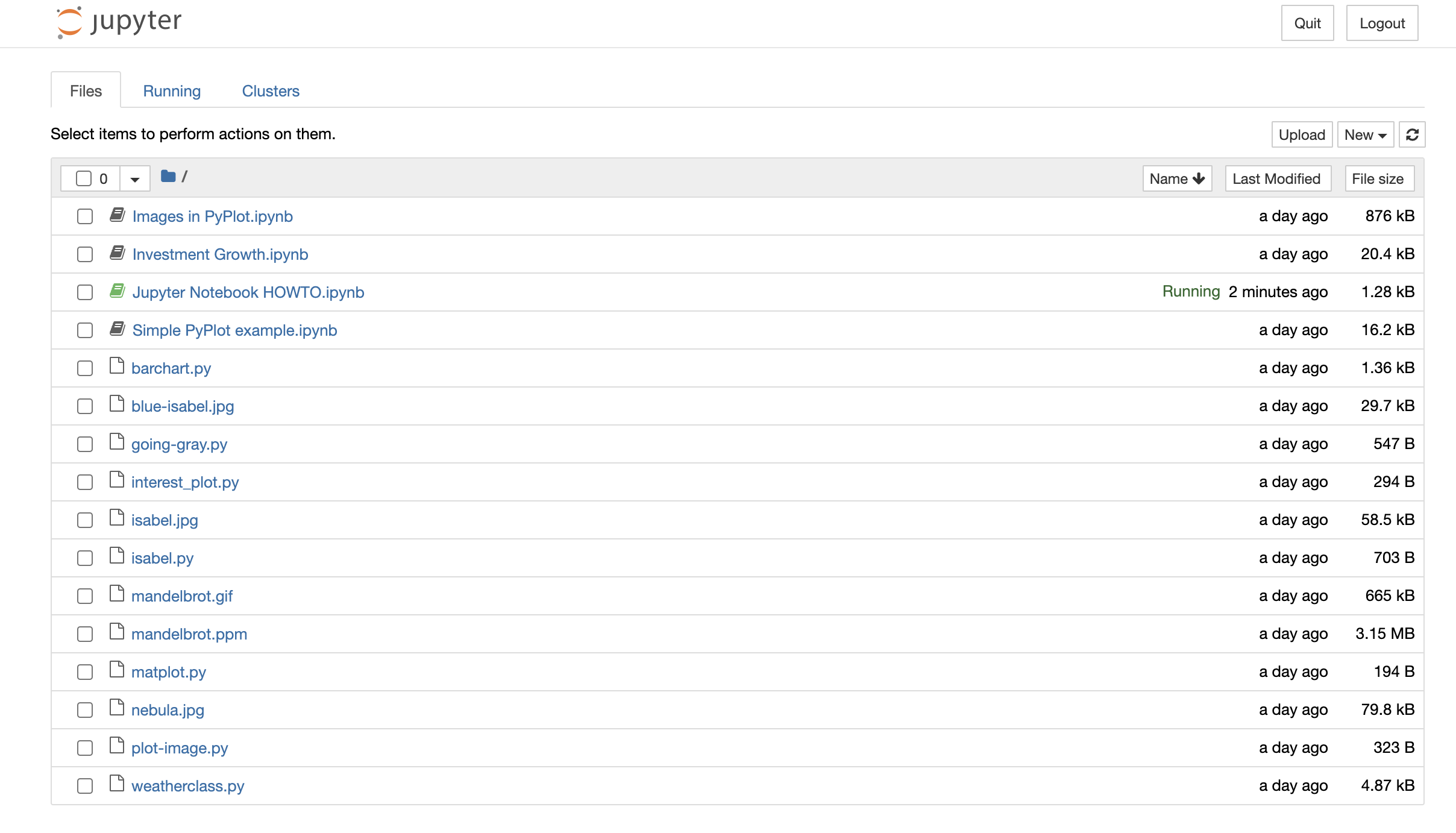Publishing your Notebooks¶
In various assignments I'll ask students to publish their notebooks so 1) I can check them out and 2) they can be viewed by anyone with an Internet connection and web browser. There are many ways to do this, but the easiest is to generate an HTML file as in the previous step and copy it to the folder used by the CS Webserver.
Everyone should have a directory called html; this directory is used by our webserver to serve WWW content.
Since several CS courses use the html folder, it's a good idea to create a separate CS290 folder here to keep things organized. To do this:
- issue the command
mkdir ~/html/CS290
- if you get any kind of error message, let me know ASAP!
Now to publish any HTML file you save from a notebook you can either copy it manually to the new folder. For example:
cp 'Jupyter Notebook HOWTO.ipynb' ~/html/CS290/.
The single quotes are necessary if the filename contains spaces, which the command line can't deal with the way a GUI file viewer can.
Turns out, this is even easier when using the Jupyterlab interface (start with jupyter lab rather than jupyter notebook). The File->Save and Export Notebook As... action allows you to select the proper folder using a dialogbox.
Wait! Why can't we just store the .ipynb files created in the original CS290 folder in this same directory? For one thing, the webserver doesn't display them in any useful way. But the main issue is that the .ipynb file is essentially the source code for our HTML files. For homework, this would be like posting your solutions to the web - an Honor Code violation.


